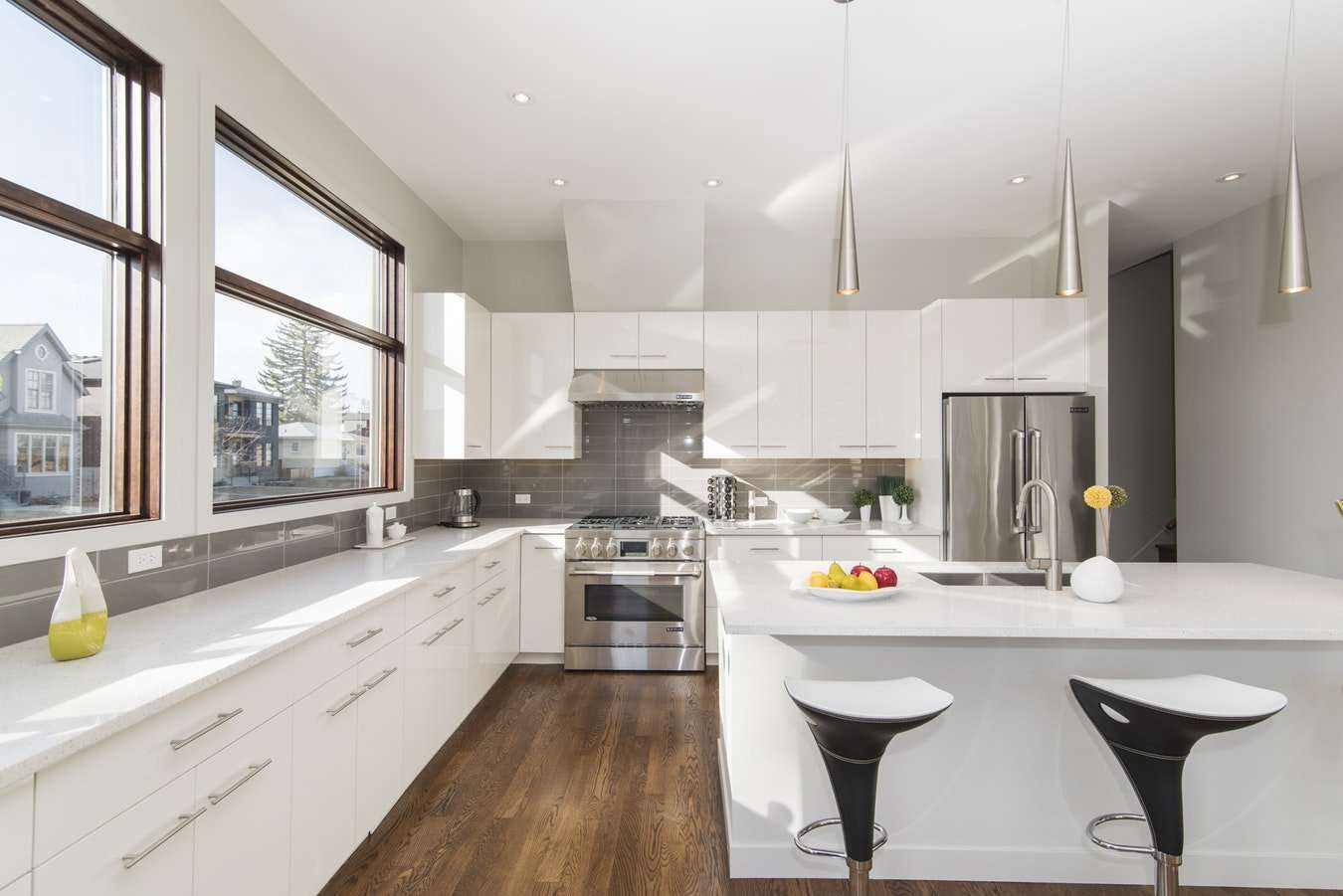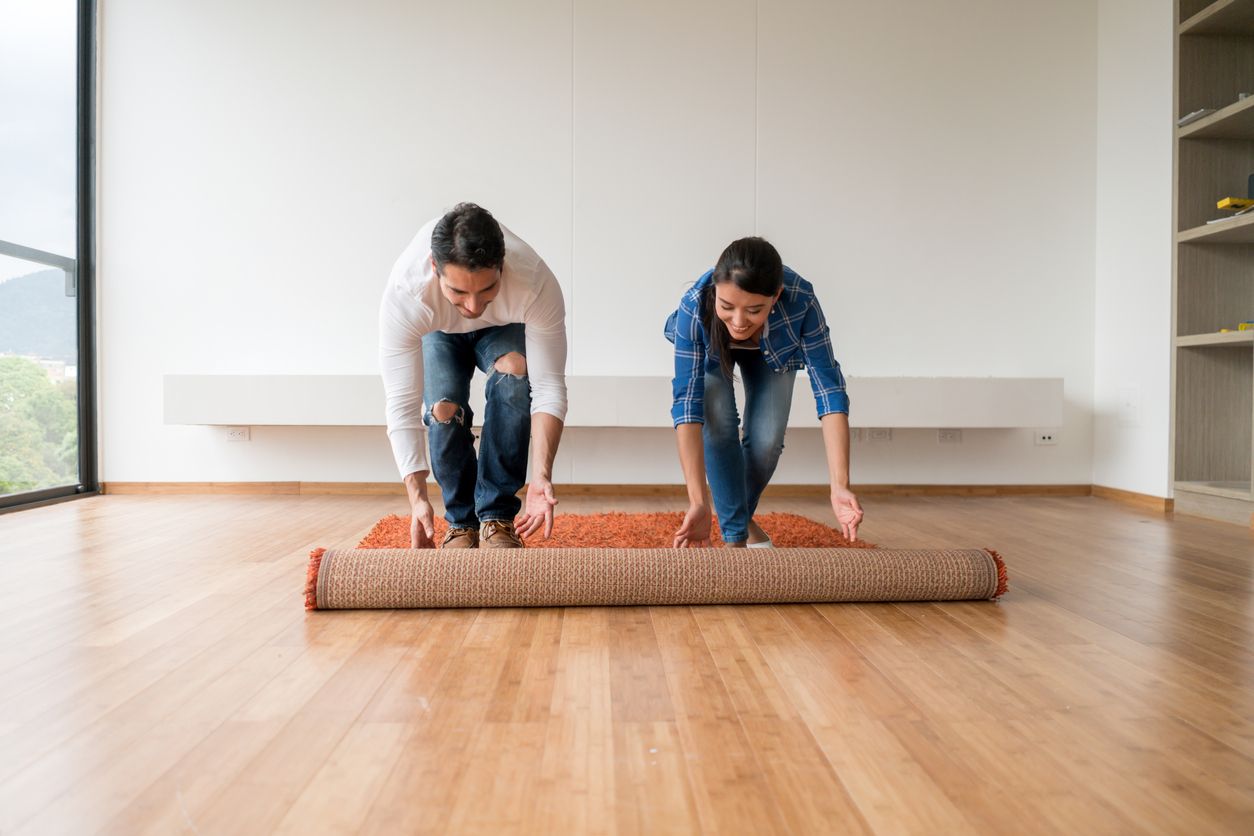Although bamboo flooring is gorgeous on its own, most of us like to warm-up space, add color, or define a seating area with an area rug. It’s also a wise idea to use mats in areas that are likely to experience a great deal of traffic, such as foyers, hallways, and stairs, and places where spills might be more likely to occur, like in front of the kitchen sink. But before you select that doormat or area rug, there are a few things worth considering if you want to keep your bamboo flooring looking good for years to come …and having accurate information about bamboo flooring is crucial.
Door Mats, Runners, and Kitchen Rugs
When considering a floor mat of any kind, you’ll want to avoid mats or coverings that are not breathable or ensure to lay a breathable natural rubber or felt pad beneath the mat. This is because hardwood and bamboo flooring emits moisture over time, and trapping it on the finished surface with non-breathable mat damage the floor finish. These natural rubber and felt pads would not only protect your flooring from moisture damage and scratches but will also make your runners/mats/rugs more comfortable and safer to walk on since they’ll reduce slippage.
Additionally, although strand woven bamboo is the hardest type of wood flooring on the market, that doesn’t mean it can’t scratch. That means it’s advisable to stay away from fibers like coir, a natural but rough material used in the construction of many doormats, and jute rugs. That scratchy, rough texture is great for removing soil and grit from the soles of shoes, but the flip side of the coin is that it can also damage your bamboo flooring, especially with people stamping and rubbing their feet on it as they enter your home! (Of course, if you find a coir or jute mat with a natural rubber backing, you’ll probably be okay!) Some companies make doormats with thick natural rubber backings that hold them in place, and that won’t damage your bamboo floor. You can even find mats made from 100% recycled rubber that are attractive and safe for your floor.
For more formal entries, you can choose a nylon or wool area rug laid on top of a natural rubber-based pad for a more sophisticated look with the same level of protection for your floor.
Why Natural Rubber?
Natural rubber rug pads have been on the market for over three decades and have a proven track record for performance and safety. Plus, natural rubber is a renewable resource that won’t stick to your flooring over time like a less expensive PVC (polyvinyl chloride) pad will.
Natural rubber is white — not black! (The black color in rubber tires is due to the addition of black carbon, which turns the rubber black and reinforces it to make it stronger.) Natural rubber outperforms and out-grips PVC and plastic rug mats, except for certain vinyl floors and finishes, will protect — not damage — wood or bamboo floors.
A Note About Natural Rubber as a Renewable Resource:
Natural rubber is a successful component of the science and technology of using plants to produce useful products that don’t deplete our natural resources nor add to the environmental hazards caused by the manufacture and use of petroleum-based products. Its use is yet another way to live comfortably and responsibly without harming future generations! Companies like Michelin (a tire manufacturer and one of the largest consumers of natural rubber in the world), and GM, are striving to do their part to ensure that natural rubber is harvested responsibly and that existing plantations are used efficiently instead of clearing land for new plantations. The SNRI works on many levels, including conservation of protected areas and responsible water management practices to ensure natural rubber’s sustainability as a worldwide resource.
What to Use Under a Large Area Rug
Most area rugs used in a living room or dining room set are large — 8′ x 10′ on average — and require an equally large pad, both to protect the floor and to keep the rug from slipping. A good rug pad also provides cushioning, making walking on a large area rug more comfortable as well.
A good — and safe — choice for a large area rug placed on top of a bamboo floor is a 100% felt rug pad. It offers excellent cushioning and support and makes the rug less likely to slip. And because it’s denser and thicker than a traditional non-slip rubber rug pad, it offers a better buffer between a large expanse of carpet and your flooring.
Rug pad USA makes a plush felt rug pad they call Eco Plush. It’s made from 100% recycled felt fibers that are heat pressed together. They come in three thicknesses (1/4“, 3/8“, and 1/2“), so you can choose the amount of cushioning and support you want, plus they’re free of glues, bonding agents, and adhesives that can outgas and possibly damage your flooring. They’re even tested quarterly by the Carpet and Rug Institute, a non-profit agency with strict environmental standards, making them a great choice to pair with you. (If you want to be 100% eco-conscious, make your area rug 100% wool, and you’re there!)
Ambient Bamboo Flooring
One of the reasons for choosing bamboo — aside from its natural beauty and resilience — is that bamboo is a renewable resource that can be replenished more quickly than hardwood. Bamboo is a fast-growing grass plant that takes a maximum of 7 years to grow to maturity, compared with many decades for a typical hardwood tree. At Ambient we source our bamboo from well-managed forests. We can source FSC®-Certified bamboo by demand; furthermore, all of our products adhere to the Lacey Act to ensure that our bamboo is legally sourced with minimal damage to the environment. Check out our bamboo flooring line, low-VOC, and no-VOC adhesives and finishes, and compare our prices today!
If you have to resist any questions, please contact us!
Last update of the article: 01/27/2020

About the Author
Jen is your go-to guru for crafting a cozy, green cocoon. 🪴 Her dive into sustainable building wasn’t just about saving the planet—it started as a mission to make family movie nights eco-friendly (and to ensure the popcorn was the only thing getting heated!). With a knack for breaking down the jargon, Jen turns eco-lingo into everyday language. Swing by the Green Living blog for a mix of earth-loving advice and home improvement hacks. Whether you’re just dipping your toes into green waters or you’ve been swimming in the deep end of DIY projects, Jen’s here to guide, giggle, and remind you that every eco-choice is a step towards a planet that thanks you… and maybe even sends a rainbow your way! 🌈


